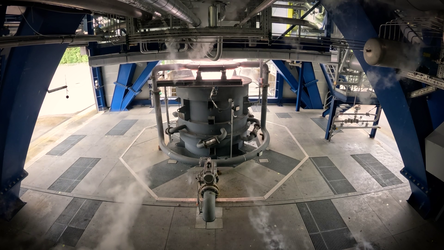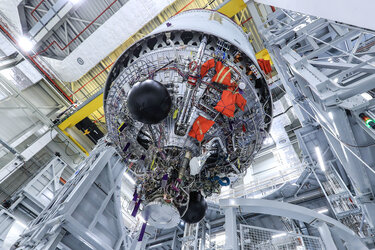

Ariane 6 upper stage testing
Thank you for liking
You have already liked this page, you can only like it once!
Validation testing on 1 September 2023 for ESA’s all-new Ariane 6 launch vehicle of the new Vinci engine and a smaller Auxiliary Power Unit (APU) on a purpose-built test bench at German aerospace agency DLR’s engine test centre in Lampoldshausen, Germany.
Vinci, the upper stage engine of Ariane 6 fed by liquid hydrogen and oxygen, can be stopped and restarted multiple times – to place satellites into different orbits and then de-orbit the upper stage, so it is not left behind as hazardous debris in space. The APU makes it possible for Vinci to restart in space, by maintaining adequate pressure in the fuel tanks and preventing bubbles in the fuel lines. The APU uses small amounts of liquid hydrogen and oxygen from the main tanks – replacing a system which relied on large quantities of tanked helium.
-
CREDIT
ESA/DLR/ArianeGroup -
LICENCE
ESA Standard Licence

Trial by fire for Ariane 6’s upper stage

Ariane 6 Vinci engine test

Trial by fire for Ariane 6’s upper stage

Ariane 6 complete upper stage

